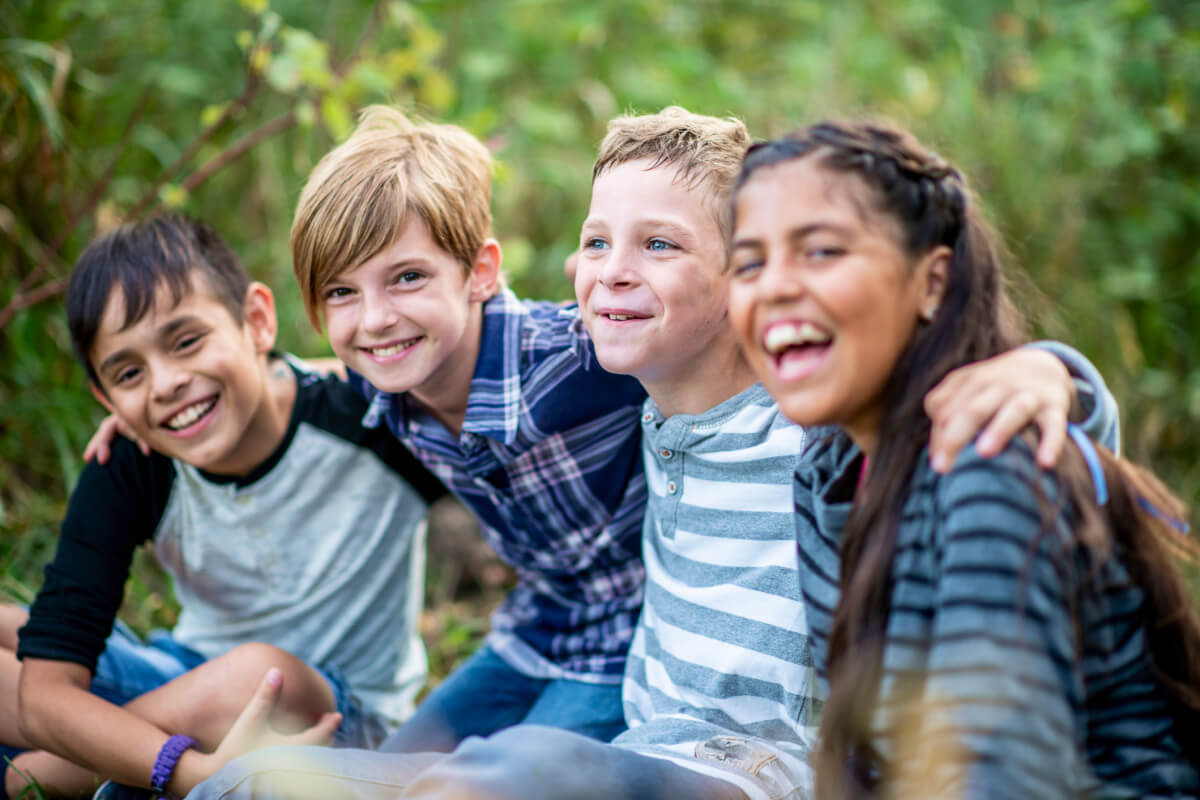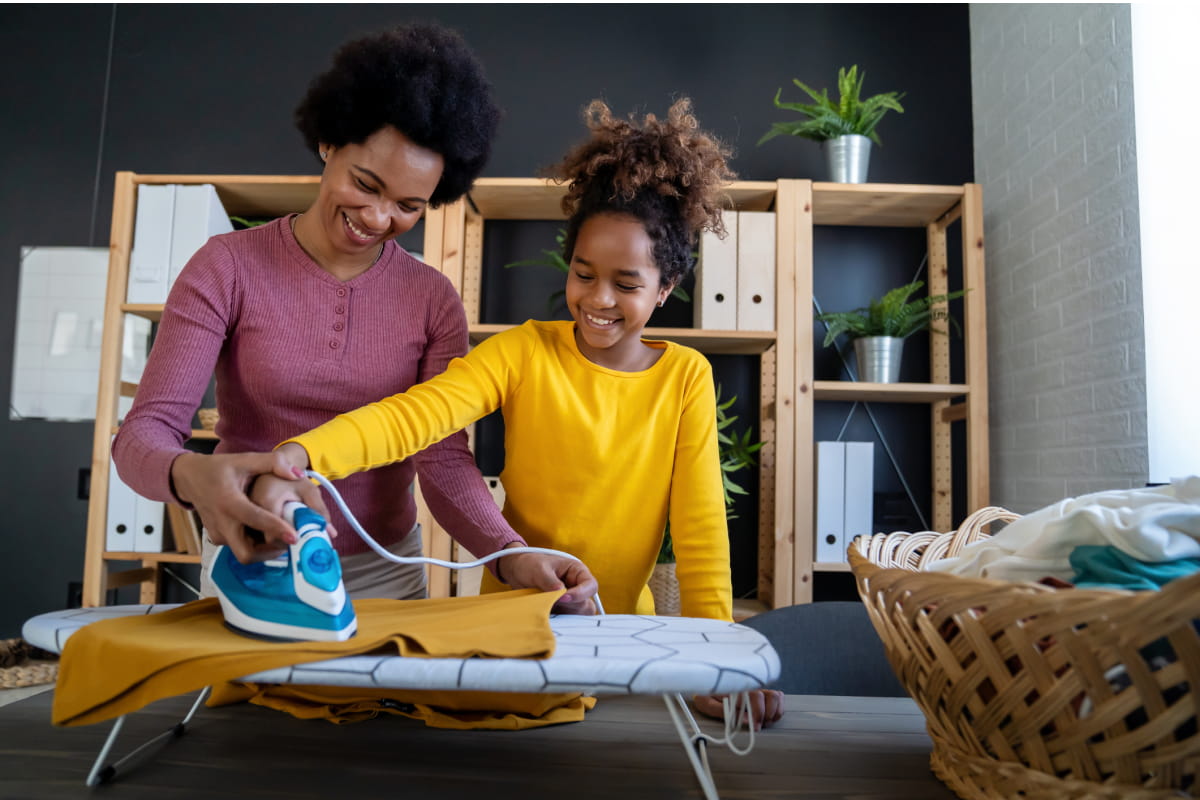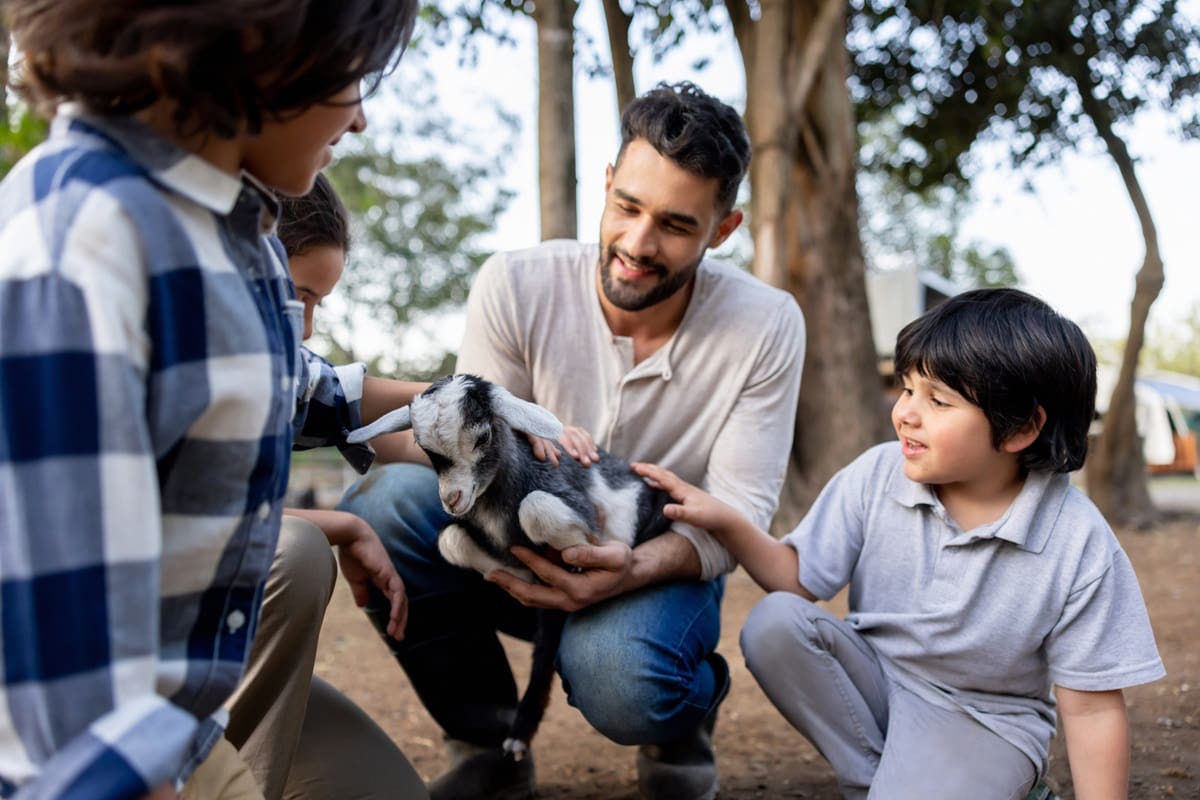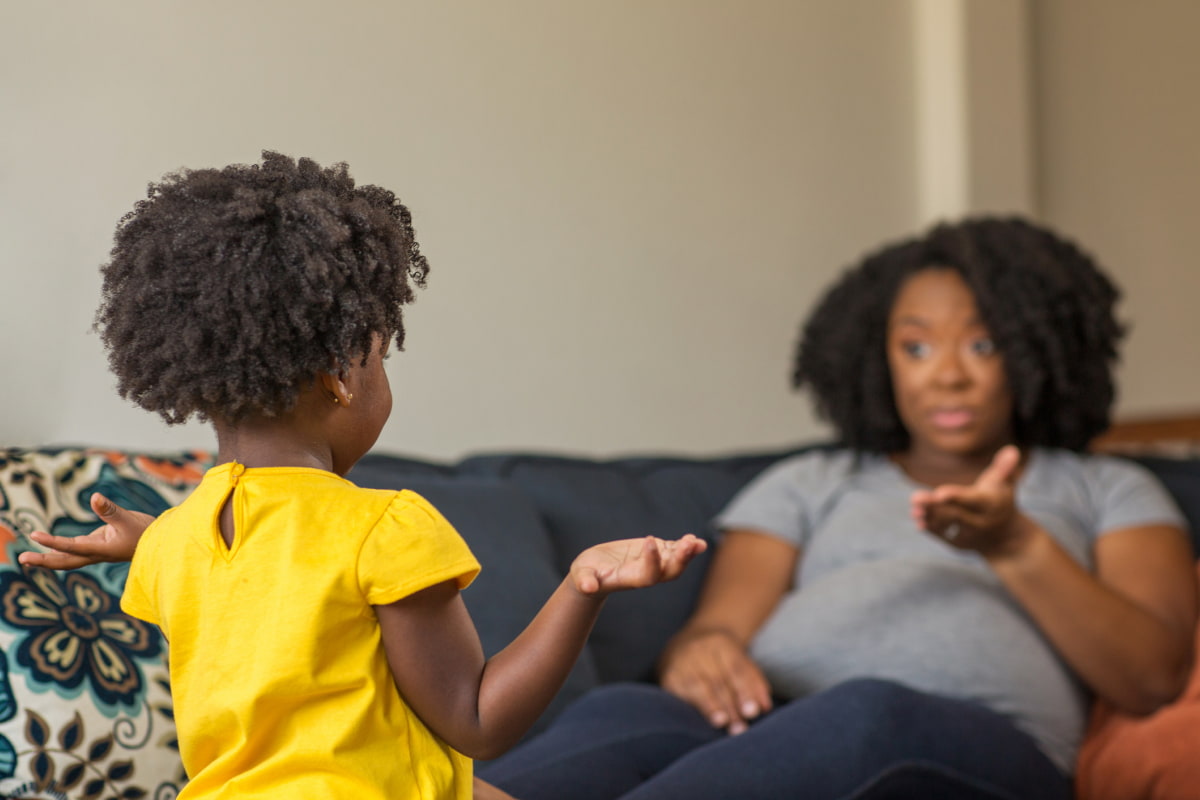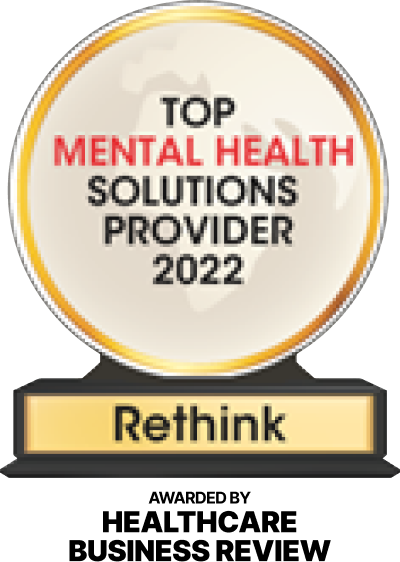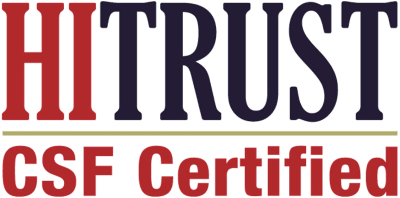About this Podcast Episode
On this episode, Angela and Kristin invite special guest, Jen Wilkens back to talk about helping kids and teens build healthy relationships. They dive into the social foundations, common discussion topics and behaviors to practice, and troubleshoot what to do when kids find themselves in relationships that don’t serve them well.
About the Hosts
Angela Nelson, Ed.D., BCBA, and Kristin Bandi, MA, BCBA, are Board Certified Behavior Analysts with expertise on human behavior and child development. They spend their days working with parents and caregivers of both typically developing children as well as children with learning, social, and behavioral challenges, or developmental disabilities. This podcast is brought to you by RethinkCare.
If you need support as a parent or caregiver of a child, we encourage you to ask your Human Resources team if RethinkCare is a part of your employer-provided benefits. RethinkCare reaches millions of lives globally through partnerships with top organizations and Fortune 1,000 companies.
Transcript
Welcome to episode 48 of Behaviorally Speaking, a podcast featuring Board Certified Behavior Analysts Angela Nelson and Kristin Bandi. On this episode, they invite Educator and Board Certified Behavior Analyst, Jen Wilkens to discuss helping kids and teens build healthy relationships. And now, here are your hosts Angela Nelson and Kristin Bandi.
Angela Nelson: Hello and welcome to our 48th episode of Behaviorally Speaking. I’m one of your hosts, Dr. Angela Nelson, a Board Certified Behavior Analyst and mother of two.
Kristin Bandi: And I’m Kristin Bandi, also a Board Certified Behavior Analyst and mother of three. Hey Angie, how’s it going?
Angie: Hello, oh my gosh we had the busiest week last week ever and we just hosted my almost 9-year-old surprise birthday party with all her friends.
Kristin: Aww that’s cute.
Angie: Ah yes, that was quite a feat. But she was very surprised and so I’m happy with how it went and also very happy that it’s over.
Kristin: Yeah, was you say how do you pull that off with like as much as kids talk like no one blew the surprise?
Angie: Yeah well, I asked the parents to not tell their kids if at all possible.
Kristin: Oh, okay smart.
Angie: A lot of them found out but they were really good I was so proud of them and my and Rosie she’s been asking for months to have a surprise party so she kind of-
Kristin: All that’s really cute ah me, right?
Angie: Yeah, it’s impossible to keep something like that because every their birthday is so important to them at that age. So, every single day there were questions, so I just had to finally say yes something.
Kristin: Really screw around it.
Angie: Yeah, something’s happening, don’t have to worry something’s happening but she didn’t know when or where or yeah who so yeah.
Kristin: Oh, that’s nice. Oh, very cute.
Angie: Yeah, well that is kind of related to our topic today in terms of you know relationships with other people. So, let’s get into it today. We are going to be talking about building healthy relationships and at various stages of development. Early friendships, romantic relationships, kind of getting into the teen years right now we’re going to talk a lot about kind of prepping for that. Um teen and kind of going off into adulthood those sorts of relationships. We’re also going to talk a little bit about just various levels of closeness, different types of relationships with those mean and what that looks like so yeah so, I’m excited for this one today.
Kristin: Yes, me too. And I’m also really excited to have one of our favorite guests back with us.
Angie: Yay!
Kristin: So, Jen Wilkins is here with us again and she is really one of our subject matter experts on this so we wanted to bring her in just to talk a little bit about how we can help support those healthy relationships. So, hi Jen, do you want to introduce yourself?
Jen Wilson: Hi everybody, yeah, I am Jen, I want to thank you guys so much for having me back. I’m really excited to talk about this big and very important topic about healthy relationships today. This has been a big topic throughout my career. My background being in special education and really working with a lot of kids, tweens and teens on social skills and this is something in terms of developing a foundation for healthy relationships that sometimes I think we might miss and so, I want to talk about that a little bit further today and how we lay those foundational pieces before we actually start getting into the actual social skills. So, thanks for having me back.
Understanding Different Types of Relationships
Angie: Thanks for being here, yeah. So let’s get right into it Jen, maybe you can help us, you know to kind of understand these different types of relationships and maybe describe the different types of relationships that kids and teens might have and maybe the attributes that go into them so parents can feel a little bit more confident and educated um when they then go and talk to their kids about some of these basics.
Jen: Absolutely, yeah, I think this is you know, this is foundation one, right? This is thinking the different types of relationships that we all have including us adults, but the more specifically for our kiddos, and then like you said Angie all those different attributes that make up that different type of relationship. So, if you kind of zoom out and you think big picture, kind of think about the different groups, um in terms of types of relationships. So, for example you have, you know, your family your nuclear family, you also have really very close friends or best friends or you might have just some acquaintances as well. For kiddos they also have classmates and other teammates that maybe are in some organized sports and then additionally some other community members. So maybe there’s some other groups that you’re involved in outside of school or outside of these extracurricular activities again those groups of peers were friends, if you will, that they socialize there with as well. So, kind of thinking about your home and your environment and your relationships and then your kiddo’s relationships and asking yourself what zones or you know what buckets do these different relationships fall in when I think about the different people that are involved in my life and trying to kind of operationalize that a little bit further into those different groups. And that might be a good place to start.
Angie: Yeah, I like how you are calling it kind of like some of those foundational skills before you launch into teaching skills. Um it makes sense to almost have like some sort of framework I’m thinking of it like you guys have probably seen those concentric circles. You’ve got the little one in the middle and then it goes out and out and out and out. And I think that helps to kind of serve as a good foundation. So, I love that, yeah.
Jen: Yeah, absolutely I mean, and I think this is sort of where it might be helpful as parents before we even have discussions with our kiddos and start to have these discussions with our kiddos is actually engage in that exercise right? Where you might grab a piece of paper, um and put your kiddo or your family in the middle in a circle and then draw those circle zones out from the middle almost like a bullseye and then your different relationship groups go in each one of those zones so you know that first zone outside of your nuclear family might be those close, really close, friends those really best friends and other close families that you and your family are involved in. And then you just go out from the zone from there. And then I think the second part of your question Angie was talking about the attributes, right? So, what are the different attributes that are involved with each one of these groups or each one of these zones and to answer that question I would say that all of the attributes are similar, but it is I think the intensity of those attributes that define the difference between the groups. So, what do I mean by that so, for example attributes might be level of respect, level of trust, might be the different types of activities that you do with that person or with that group. Maybe it’s the amount of time that you spend with that person or that group and then maybe also the level of compromise or individuality that that person or that group brings to your relationships. So those are just a few, um I think that might change. Ah you know for some people based on your values, you know, but those are kind of some foundational ones. So, trust, respect, individuality level, compromise and the types of conversations that you might have.
Kristin: Yeah I really like the idea of making it visual which is no surprise but I like that because I feel like this could be a really like you said a really good foundation to come back to it when and I know we’ll talk about it later but when these social conflicts arise or these questions and all of the you know difficulties of just being ah a tween and a teen come u, you know parents can kind of circle back to that circle no pun intended there see what I did.
Angie: You’re so clever.
Navigating Unhealthy Relationships
Kristin: Yeah so yeah well okay so I really like that, and I think one other thing before we get into teaching the skills and strategies and what does that look like is a little bit of self-reflection, we talk about this a lot Angie when we get into some of these topics as a parent it’s like well let me look at myself first right? And then I can teach my child. So obviously as parents we know that we have our own lived experiences and you know we might be for example might be really social, but our child isn’t right? Or ah we might be in ah in an unhealthy relationship right, but now we need to teach our kids to set boundaries for example. So how can parents approach these topics in an unbiased manner?
Jen: You that’s a big one, right? That’s the hardest part of parenting when we have the mirror on ourselves, right? So, um no absolutely and I think know the to answer your question that’s the first exercise, it’s just asking yourself, right, like of your own relationships that you have in your life even in starting yourself and doing this exercise right with the zones, asking yourself about the attributes that that particular person brings and why they’re in maybe the really good friend zone versus the acquaintance zone. And then really looking at those attributes and then having to be really reflective right and asking ourselves when have I not been good with my boundaries or when have I not been good with maybe recognizing some of the behaviors right that somebody else is presenting that is not healthy and when I should be recognizing that and even pivoting and maybe getting out of that that relationship. So yeah, I think it’s always looking in the mirror, being reflective and then engaging in some of these exercises yourself actually before you have that conversation with your kiddo so that you can pick away maybe at some of those biased parts.
Angie: I feel like this could be somewhat uncomfortable right? I think it’s a necessary exercise that parents have to go through, but I can see some parents so, for example if you are naturally shy or you feel better in the you know a small group setting or just being by yourself but your child really is super social and just is the life of the party and always wants to be out and about that can be you know a little bit of a balance between kind of pushing yourself but being true to yourself and so yeah I could see this definitely being a tricky part of parenting just you know if you have opposite personality types or um yeah I don’t know you might have to kind of push yourself a little bit and allow your child that freedom to kind of be who they are.
Kristin: Right.
Jen: Yeah, absolutely and I think it’s kind of going into a little bit about you know I have a lot of conversation sometimes with parents too where they themselves are very social and you know they have a huge set of friends. You know they might have 10 different people that are in the best friend zone, but they have a kiddo that maybe you know just has one or two is better with kind of closer relationships maybe less and just sort of looking at that being okay with that and recognizing that we all have different social cups that we need to fill um or fill in our own way and I think at the end of the day it’s asking ourselves kind of going back to some attributes a little bit right? Like does my kiddo seem happy does my kiddo seem fulfilled with these relationships even if it’s with 10 or with just two the result in the outcome is still the same, yeah.
The Importance of Early Conversations
Angie: Yeah, I think that’s a good self-reflection exercise or it’s a good tip. Alright well, moving right along, so the next question that we have for you Jen is how do we approach these conversations with our kids at different ages so you might have an 8-year-old, or you might have a full-on teen, but you know what are your thoughts on just kind of like approaching these relationships or conversations about relationships with our kids?
Jen: Yeah, absolutely I mean I think the first piece is it depends. Let’s start with their age and what’s developmentally appropriate right? So, when kiddos are younger we’re really kind of we sometimes get into that conversation a little bit are they a friend or are they a bully but really for this podcast today but really talking about that age group really kind of starting in that 8, 9 age range a little bit that’s where things start to really pick up socially for kids and so you know for your 8- and 9-year-olds they’re zones of different friends or groups might look different then let’s say your teen who is now 16 and is in added a new zone maybe they have romantic relationships that that zone doesn’t fit into your younger kiddos. But we’re adding that in later on when they’re getting to the teen age. So, I think it’s kind of first starting like what’s appropriate for my kiddo at their age and kind of starting there.
Angie: Yeah, and it sounds like this is probably not a one and one situation, right? It’s ongoing and you know evolving over time not kind of I guess concrete, but more of like a fluid sort of thing that we have on a regular basis I would imagine.
Jen: Oh yeah absolutely, definitely looking at this as an ongoing conversation and quite frankly even as adults we’re still managing our relationships so kind of looking at this as a practice and not a mastery, I think that’s why this particular topic today is important because we’re really talking about the foundational layers that you can start planting those seeds in those ongoing conversations so that you’re really scaffolding their learning and building some momentum about understanding healthy relationships over time. And that kind of goes back to that visual a little bit, right? So, when we think about an anchor. You know that visual that you might have started doing an exercise on yourself with and then now you’re deciding to have that conversation with your kiddos down the line that might be just step one it’s just thinking about the different types of friendships, different types of relationships we have and starting by drawing a visual with your 8-year-old or your 9-year-old and having that conversation and getting them to fill in the different people that they think are part of each one of those zones and really again talking about those attributes and why they’re in an acquaintance zone for example versus a best friend zone.
Angie: Yeah, I love that.
Kristin: Yeah that’s good I was just thinking when you were talking about it I was thinking it feels like math, but not math but you know how in math class you like everything builds on ah you get you like learn your numbers and then it builds and builds and builds and I feel like it’s kind of like that where it’s an ongoing conversation and even into adulthood as you mentioned because I’m you know I’ll call my sister up all the time be like oh my gosh I have to tell you about this right? And I’m still trying to navigate just all my you know all relationships as an adult. So, it’s an interesting point you bring up.
Creating a Culture of Open Communication
Kristin: Yeah, so ah the next one here, so, you know there are some kids where we could create that visual and we can talk about it and they kind of get it right and maybe there doesn’t need to be any more kind of explicit teaching. They’re kind of like okay I understand, and you’ve created that environment of communication, and they come back to you, and you can have conversations about it, but what about for kids who we have to move beyond talking about it right? So, what are what does it actually look like so how can we set this up for our kids?
Jen: Yeah, that’s a really great question and I think blends itself to the you know again the ongoing nature of it and how we can come back to it and really break it down a little bit furthermore for them. But and you know I think in terms of to us beyond talking about it, it’s really like you said those visuals or actual exercises that we’re able to do while we’re talking about it right? So, it’s moving it from just thinking about it to like really being more constructive about it um and having a visual having some teaching materials quite honestly to go with your conversation because that’s going to allow you to come back each time to the ongoing conversation and be able to build over time towards the next step which is those explicit social skills, and how are we setting our kiddos up for success when they’re not with us when they are with their peers. Um so I think the first one again going back to that visual and really breaking it down further would suggest breaking down what those attributes really mean. So, for example, we might have another visual as well where we talk about these different attributes, or these different values and we might draw pictures to represent it when we have words with it either one, but for example respect. What does respect even mean? Well, it means how we think about each other is important right. Or trust, what does trust really mean? Compromise, we’re both willing to give and take what does compromise really mean? Um so again going back to what’s developmentally appropriate for your kiddo and what you feel like that they can digest and consume but really kind of really kind of defining that further what those attributes mean.
Identifying Red Flags in Relationships
Jen: And then the next step after that is thinking about actual behaviors right that represent respect or actual behaviors that represent trust. So, for example if my friend always makes me feel good about myself and they never talk bad about anybody you know when nobody’s around there’s a level of trust there versus when you see that friend talk bad about somebody when they’re not around that that level of trust might be a little bit different right? So, we really start getting into a specific examples and specific behaviors that really drive the point of what this attribute means.
Kristin: Oh yeah that’s so good, I was just thinking too I wonder if you have any other ideas, for other behaviors we could do to practice with our kids. Maybe I’m selfishly thinking about this, but do you have other ideas too?
Role-Playing and Practice Exercises
Jen: Absolutely, I mean I think this is you know ongoing conversation 25 if you will. So the next piece is now I’ve laid the foundation, my different attributes how those express themselves behaviorally right we just talked about the example of trust but now again taking it a step further with our kiddos that need more role-playing more exercising more practicing to build that muscle so to speak so that when they are around their friends that they’re able to mom they’re able to again develop those healthy relationships so for example some kiddos might need a comic strip right where you could draw a simple comic strip and go through the different behaviors or a scenario that might have happened and you can kind of talk out loud about the attributes whether it was a good thing or maybe this wasn’t a good thing right and then it’s so nice too with the comet strip too as well because you can do your little thought bubbles and do some modeling of some internal dialogue right so oh my friend is talking about another friend right now how do I feel about that what do I think about that and I can actually write that down on a comic strip and that thought bubble versus the actual dialogue providing security and kind of walking through it that way another one is just explicit role-playing, very much like a theater performance if you will, right where somebody’s acting as friend A and then your kiddo is having to respond to that right so whether it’s another sibling or another parent or a an aunt or uncle somebody that’s close for you know feel safe role-playing some of those things also a really helpful strategy as well.
The Power of Visuals and Games
Kristin: Oh yeah, I was just thinking too I’ve seen ah some social skills games that could be really helpful. There’s a board game, that’s I think it’s called social skills for kids or something. There’s like a little board game that could be helpful. Um and then I even will recommend like conversation cards to families kind of like the what would you do type scenarios and see if you could pull some of those because I feel like you had mentioned roleplay and it made me think you know a lot of kids and we’ve talked about this on other podcasts but a lot of kids are going to feel a lot more comfortable to do it if they’ve practiced it right? So, practicing how to maybe even stand up to their friend that is taking advantage of them for example right? Um, but I really think there’s a lot of value behind role plays for sure.
Angie: Yeah, I also think I’m going back to role place to not only standing up for yourself, but if you’re on the other side of the coin where maybe you’ve done something that wasn’t so nice. You know, practicing how do we apologize.
Kristin: Right? Yep.
Angie: How do we make amends when we’re the ones at fault?
Jen: Yeah, no that’s a great point and to your point Kristin too of the game how do you gamify it a little bit yeah, I mean even as simple as taking some index cards right and writing down those what if scenarios right? So, Angie to your point what if I was the one that you know did something that was untrustworthy, or not honest what steps do I have to roleplay and take towards that versus the what if Index card that well what if that was done to you or a friend was not honest right? Or that they lost your trust and how would you roleplay and exercise and practice through that. So, absolutely all of the above and it just really solidifies the ability to take what you’ve been talking about right when you’re laying the foundation with these different zones and groups with the attributes and then now applying it into some exercises and games and I think the nice thing about the Index cards is that sometimes you can put real life scenarios that have happened you know or that maybe you’re not quite sure uh how your kiddo’s going to navigate this, and you want to know how they might navigate it another great way into figuring out how your kiddo is navigating relationships too.
When and How to Intervene in Unhealthy Relationships
Angie: Yeah, so we have a couple questions left for you Jen, moving away from the foundational teaching and practice kind of discussion what about when maybe your child does enter into what we believe to be an unhealthy relationship, unhealthy friendship or maybe romantic relationship. How do we or when do we intervene, and you know kind of what are your thoughts on the approach to that?
Jen: Yeah, I mean this is a this is a tough one, because I think we all know when you say to your tween or teen don’t hang out with that person, they do the opposite of that, so we know that that strategy doesn’t work. Um if we just come out and directly say you can’t hang out that person right because of X, Y, and Z.
Angie: Or that backfires on you and you’ve got like a younger kid and then the mom of that other kid finds out and then they’re like why are you telling your child not hang out with my child like it’s just getting messy.
Jen: Yeah, it could get messy in a lot of different directions that you don’t want to have to manage. So, instead I would say the first question maybe as a parent to ask yourself. You know when you’re observing what you feel might be an unhealthy relationship that your child. Is in asking yourself is this does this seem to be just a onetime thing something that’s episodic versus something that’s chronic. Um and that’s a lot different right? And I think if we can answer the question for ourselves that this seems to be ah a chronic problem work or you know a chronic situation or something that you know is not safe then we need to intervene right? But I think the question is how right? So the next piece is thinking about how again this is an ongoing conversations is not a onetime thing but an ongoing conversation and trying to get your child or teen to come to their own decision-making process about why that person might not be a healthy relationship for them. And so, then that goes right back to things that we started this conversation with right where we can ask ourselves kind of where this person is in the zone of my teen or tween um and asking our tween or teen what attributes, what are some things that they like about that person and why right? Can they answer those questions? Can we start there, because we start to dig into those attributes, right? And then we can start to get into a different discussion about maybe there’s some unhealthy attributes here but again having them kind of come to that decision making process over a period of time. If it’s something that lends itself time. Obviously if it’s a safety issue then we need to intervene right away and that’s different. Um but yeah those are a few pieces to start with.
Angie: Yeah, I like that kind of going back to values and you know how does this person make you feel about yourself. Um I’m also thinking too I worked with a family a couple weeks ago this goes back to our conversation earlier about kind of self-reflection what kind of person you are versus your kids and this family the parents were, so you know kind of quiet soft-spoken like to just kind of be with their immediate family. Their child was the complete opposite very active and boisterous and exciting just wanted to socialize and the parents were saying they didn’t want their child to hang out with some of these kids that their child had identified at school because they were also very loud and energetic and kind of roughhousing, and it was a good conversation because it was like, are these kids breaking rules, are they being disrespectful. No, they weren’t they were just kind of really boisterous and so that was a good reflection I think for the parents which is this an unhealthy relationship or are you putting your kind of just general belief system or putting your own values on how a kid should act or how a friend should be versus what your child is enjoying in their friends, you know? So, I do think it is a good idea to kind of identify what that boundary is between healthy and unhealthy. Is there a little bit of a gray area, is it me just projecting like, well I’m quiet so I want my friend, my kid’s friends to be quiet too, versus no actually this child is you know hurting my child in some way.
Kristin: I was also thinking of something else when you were talking about Jen is that you know kind of the why in why kids might be seeking that unhealthy relationship that they may not even know they’re seeking right, but maybe going through some of that you know discovery work with your teen you realize oh okay they’re seeking something from this peer right? And figuring out a way to get that something from a different peer, right? And so, it’s like it’s maybe they’re attracted to the kids that are kind of getting in trouble because they’re giving them attention for example, right? But maybe it’s like well let’s get you into some sports or some other activities where you can make new friends that aren’t even at your school so, then it can pull you away from some of that others you know the reason that you might be you know trying to connect with those that don’t have the same beliefs as you.
Jen: Absolutely yeah and that goes back to your zones, right? Like I think it’s a true self-assessment of your kiddo’s relationships and the zones and stuff and you know for example, if you don’t want your kids hanging out with this group that’s always getting in trouble, and we don’t have any you know other organized groups, let’s say outside or other community involvement for example, how are we gonna how are we gonna have that shift? How are we gonna have that conversation and also that comparative value right? Where it’s like oh I have this really solid group of friends here in this one environment and it sheds a lot of light on this other group that I’ve probably shouldn’t be hanging out with over here.
Kristin: Oh yeah, it’s a really good point.
Jen: So, the or that you build those connection points, and you have that comparative value it really again starts to reinforce again those conversations about attributes, and you know what that really means.
Angie: Yeah.
Balancing Autonomy and Safety
Kristin: Yeah that’s a really good point and related to that, kind of, moving into you know a little bit more discussion with teens and you had mentioned before you know some point our teenagers and beyond are going to start experiencing romantic relationships and so a question that comes up a lot on consultations I have with families is well how do we balance our teens autonomy right? We want them to be able to make their own choices and decisions, but as a parent we also want to keep them safe, so how can we do that as a parent as our kids and our tweens and teens kind of enter more of the romantic relationship?
Creating a Safe Space for Conversations
Jen: Yeah, absolutely I mean I think this it goes back to thinking about how we’re keeping that open door policy of communication going. Um you know the common thread within this podcast is the ongoing conversation. So, the tough part though with teens is that they don’t want to have those conversations. It’s hard to get them down at the kitchen table to sit down and talk about these things. Especially if you’re trying to randomly do it on a Tuesday night right? So, I think that the point with kind of your older kiddos your between your teen your age is scheduling some time to have those conversations scheduling some time where you’re not parenting, it’s just kind of quality time and you’re just listening and just learning about what’s happening in their world right? And the relationships that they’re involved in but just I think around this group this age group is kind of us as parents being proactive about that and making sure that we have that time in the schedule so that we do have that ongoing communication. Um when it starts to get a little bit tough with the team group. And then I think another to your point about romantic relationships and that being a new zone for teens and that we’re adding in I think one piece that’s important to talk about with kids on this topic even at 8, 9 all the way up until teens is the understanding that relationships are fluid that they change. Um because that’s especially true when we start getting into the tween and teen years is so if we’re talking with our younger kiddos our 8- or 9-year-old kiddos and preparing them and letting them know that changes happen in relationships that then when we get to the twain and teen years in peer groups begin to change or romantic relationships begin to start or fall off still there’s going to be some discomfort and pain you know with that. But if we’ve been talking about the fluidity of relationships and that there’s a change whether for the good meaning it gets to be a stronger relationship or for the opposite right where we need to end that relationship. But I think priming them with that information from a young age is important so that when we get to the teen years, we have more foundational tools to help us navigate those romantic relationships when they start to get heavy too.
Angie: Yeah you just had like when you when I was listening to talk it just sparked an idea too, going back to some of those earlier teaching strategies so role plays, and scripting might be really important to help our kids exit a relationship and if we keep that open door policy and that good strong kind of communication going with our kids hopefully they’ll be more likely to come to us for guidance on that like oh mom you know what this person’s just continuously being mean to me or I want to maybe break up with my romantic partner, how do I do this in a respectful way? You know so, to be able to help your kids navigate not just building relationships but maybe exiting a relationship that isn’t safe or isn’t serving them well is something to think about.
Jen: Absolutely and this is where we start getting into the explicit teaching so of the social skills right and the tools that your tween or teen can pull out of their back pocket, to you know to help them navigate that. And I think one big piece too is especially around that age group is peer pressure right? So, if my tween or teen feels that they’re in a situation that they don’t want to be in how can I help them get out of it without them feeling that there’s some sort of social stigma or you know this sort of social backlash that they would get from their peers, but you know kind of teaching them those tools right? Like, stomach is really hurting right now, I think I need to go to the doctor or whatever it is. You know some explicit verbal scripts some explicit um ah tools and things that they can rely on to get out of things that they feel are not something they should be in and that kind of-
Kristin: I was just going to say I saw something on this, real quick, I saw I don’t know what I was watching but it was like teaching you how younger kids you might teach a code word right? It was ah like a code word that you can have with your teenager via text and so if like your teenager texts you strawberry or something right? Then you know that you need to call and say oh sorry you got to come home. There’s something came up you got to come home and that’s a way for the child or teenager really to ask for you know and think it was even like and no questions asked right? Yep, I will come get you I won’t ask you any questions I will bring you home and you can go to sleep and that’s that right? And it’s almost like you’re setting that expectation like you will call, you can call me, I will come get you, and that’s it I won’t even ask you any questions about it, but you text me that code word and I know exactly what to do and I think that could be really helpful in this scenario.
Jen: Yeah, absolutely and I think that also goes into back to the open-door communication policy, right? If you’re able to communicate them they know that they can rely on you for that, there’s no punishment, there’s no judgment, there’s nothing that’s going to come with it, right? It’s just that I can call Mom or Dad, or you know my caregiver and that there won’t be any punishment for that. Even though I was not in a good situation, yeah.
Angie: I’ve even heard too if you have that code word or something the parent knows to call you and then come up with some sort of scenario like um you need to come home right now, you’re in trouble or you know you need to come home right now something happened. So the parent can be okay with taking the blame, right they can there. You know I think I may have shared last time Kristin we were doing our a podcast that it was this reality party did I tell you about that this reality party that we went to through the school district and they kind of staged this party.
Kristin: Oh no.
Angie: Oh gosh. Yeah they staged this party at a house in our community and then it was a partnership between the school district, the sheriff’s department, the some of the kind of counselors at the parks and rec and just a couple different stakeholders and they stage this party, and they have real teenagers acting out social scenarios and different kind of substances that are being used at parties and different interactions that go on and it was really insightful for the parents we might have to talk about this on another time another whole podcast. But anyways they were saying how they’ve seen it work really well where the parents and the child are on the same page. The parents are like look, I’ll play the bad guy if you ever get into a bind text me something then I’ll call and say you need to come home right now and then the child says oh I got to go home. Sorry about that guy I got to leave right? So, then it’s um it’s not the child having to navigate these uncomfortable conversations or peer pressure. It’s just sorry there’s nothing I could do about it my parents coming to pick me up right now you know so you could have these understandings between yourself and your child to make it, you know an easy exit for them. You know in these kind of uncomfortable social scenarios.
Jen: Yeah and I would say one last point on this topic here is that you know when we’re when we’re thinking about this age group too I think it’s thinking about um those specific tools and behaviors that they can use in the real world versus the digital world right and so, kind of again. What do relationships look like digitally versus in the real world and what are some of those tools of like how do I get out of something that I know I shouldn’t be in right in terms of a digital relationship. Versus if you’re physically there I think that’s another big piece for um parents to be thinking about as well when you start thinking about the different tools that you might need to use in different settings.
Angie: Yeah, we might need to have another podcast on the digital world and how to navigate all that stuff. It’s been a while since we’ve talked about that topic but it’s definitely a hot one.
Kristin: I was just thinking that because I know when we were actually it might have been another podcast or when we were maybe prepping for this podcast we were talking about you know sometimes people jump in between those things you know we like go from you just met this person five seconds on the Internet now your best friends like what happened here like there’s so many of these zones that you missed and so no you cannot just go to this person’s house across the state right and I remember Angie I was telling you some stories on one of our podcasts some family members not some parents consulting with that you know they were telling me about someone else’s 10-year-old that like stole a car and like drove to the stranger’s house and you know crazy things like that. But I feel like it’s yeah understanding how the digital zones work as well could be a whole different podcast.
Angie: Yeah.
Jen: Absolutely.
Angie: Alright well that’s all we have for you Jen thanks so much for joining us today.
Jen: Thank you guys I appreciate you having me on talking about this really important topic one last plug that I will put in is that if you have access to your RethinkCare online account we have lots of really good resources on this topic if you just login, go to your search bar and type in relationships. It will bring up a lot of different lesson videos as well as printable materials that actually will help you with some of these tangible exercises and things we’ve talked about today.
Kristin: Awesome! Alright thank you for joining us on our 48th episode of Behaviorally Speaking. On our next episode we will discuss giftedness and twice exceptional kids. Until then don’t forget to subscribe to this podcast on your favorite platform so you never miss an episode.
You’ve been listening to Behaviorally Speaking, with Angela Nelson and Kristin Bandi, brought to you by RethinkCare. Find out more at Rethinkcare.com. You can find past podcast episodes under the Resources tab. We also invite you to subscribe, follow, like, and leave us feedback wherever you listen to podcasts. Your feedback helps us prepare topics and content for future episodes. Until next time, have a great day.

